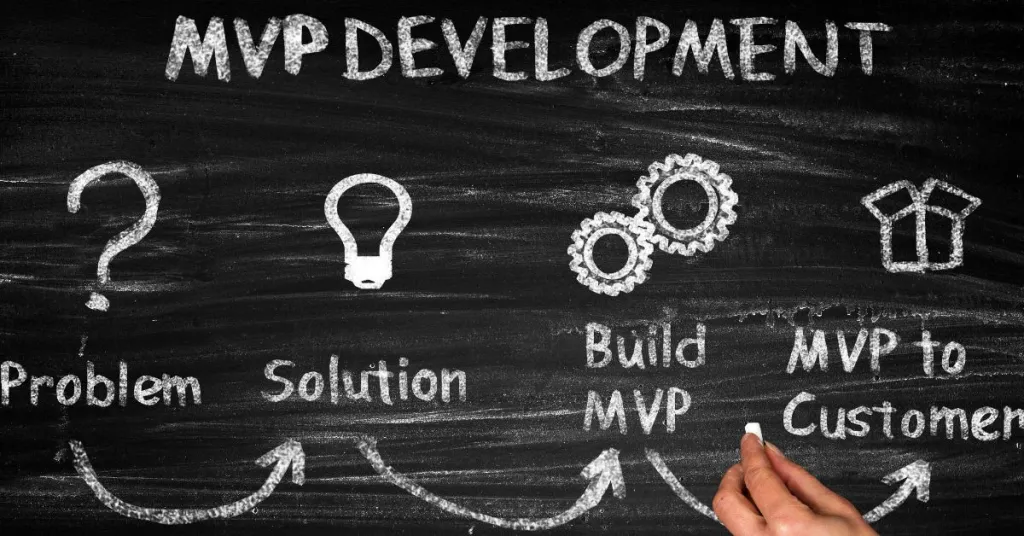How to Define an MVP for Your Project
If you have a great idea for a product or service, you might be tempted to start building it right away. However, this can be a risky and costly move, especially if you don’t validate your idea with your target market first. That’s why many entrepreneurs and startups use the concept of a minimum viable product (MVP) to test their assumptions and learn from customer feedback.

An MVP is a version of your product or service that has the minimum set of features or functionalities that can solve a problem or satisfy a need for your potential customers. It is not a final or polished product, but rather a prototype or experiment that you can use to gather data and insights about your idea.
The benefits of starting with an MVP are:
- You can save time and money by avoiding unnecessary features or functionalities that your customers don’t want or need.
- You can reduce the risk of failure by validating your idea with real users before investing more resources into development.
- You can learn from customer feedback and iterate on your product or service based on their needs and preferences.
- You can build a loyal and engaged customer base that can help you spread the word about your product or service.
So how do you define an MVP for your project? Here are some steps to follow:
- Identify the problem or need that you want to solve or satisfy for your target market. What is the pain point or gap that your idea addresses? Who are your potential customers and what are their characteristics, behaviors, and motivations?
- Define the value proposition of your product or service. What is the unique benefit or solution that your idea offers to your potential customers? How does it differ from existing products or services in the market? What is the core value that you want to deliver to your customers?
- List the features or functionalities that are essential to deliver the value proposition of your product or service. These are the must-have features or functionalities that your MVP should have to solve the problem or satisfy the need for your potential customers. Prioritize them based on their importance and feasibility.
- Build a prototype or mockup of your MVP that showcases the essential features or functionalities. This can be a simple sketch, wireframe, landing page, video, slideshow, or any other format that can demonstrate how your product or service works and what value it provides to your potential customers.
- Test your MVP with real users and collect feedback. Find a small group of early adopters or potential customers who are willing to try out your MVP and give you honest and constructive feedback. You can use various methods such as surveys, interviews, focus groups, usability tests, analytics, etc. to measure and analyze their reactions, behaviors, opinions, and suggestions.
- Learn from the feedback and iterate on your MVP based on the data and insights that you gathered. Identify what works and what doesn’t work in your MVP and make changes accordingly. You can also add new features or functionalities that your customers request or value, as long as they align with your value proposition and problem statement.
- Repeat steps 5 and 6 until you achieve product-market fit. This is the stage where you have validated that there is a sufficient demand for your product or service in the market and that your customers are satisfied with it. You can then scale up your product or service by adding more features or functionalities, improving the design and quality, expanding the market reach, etc.
Starting a project from an MVP and up is a critical approach that can help you avoid wasting time, money, and effort on building something that nobody wants or needs. It can also help you create a better product or service that meets the expectations and desires of your customers.
However, defining an MVP for your project can be challenging if you don’t have a clear vision of what you want to build and why. If you have an idea but don’t know how to express it properly to a developer or project manager, here are some tips to help you:
- Write down your idea in one sentence that summarizes the problem, solution, and benefit of your product or service.
- Research the market and competitors to see if there are equivalent products or services already available and how they differ from yours.
- Create a customer persona that describes who your ideal customer is, what are their goals, challenges, needs, preferences, etc.
- Use tools such as Lean Canvas, Business Model Canvas, Value Proposition Canvas, etc. to map out the key elements of your business model such as customer segments, value propositions, channels, revenue streams, cost structure, etc.
- Use tools such as Story Mapping, User Journey Mapping, User Flow Diagrams, etc. to visualize how your customer will interact with your product or service from start to finish.
- Use tools such as Balsamiq, Figma, Sketch, Adobe XD, etc. to create low-fidelity prototypes or mockups of your product or service that illustrate the main features or functionalities.
- Share your ideas, visions, and prototypes with your developers or project managers and get their feedback and suggestions on how to improve it.
By following these tips, you can communicate your idea more effectively and efficiently to your developer or project manager and ensure that they understand your goals and expectations. You can also collaborate with them to define the scope and specifications of your MVP and plan the development process accordingly.


